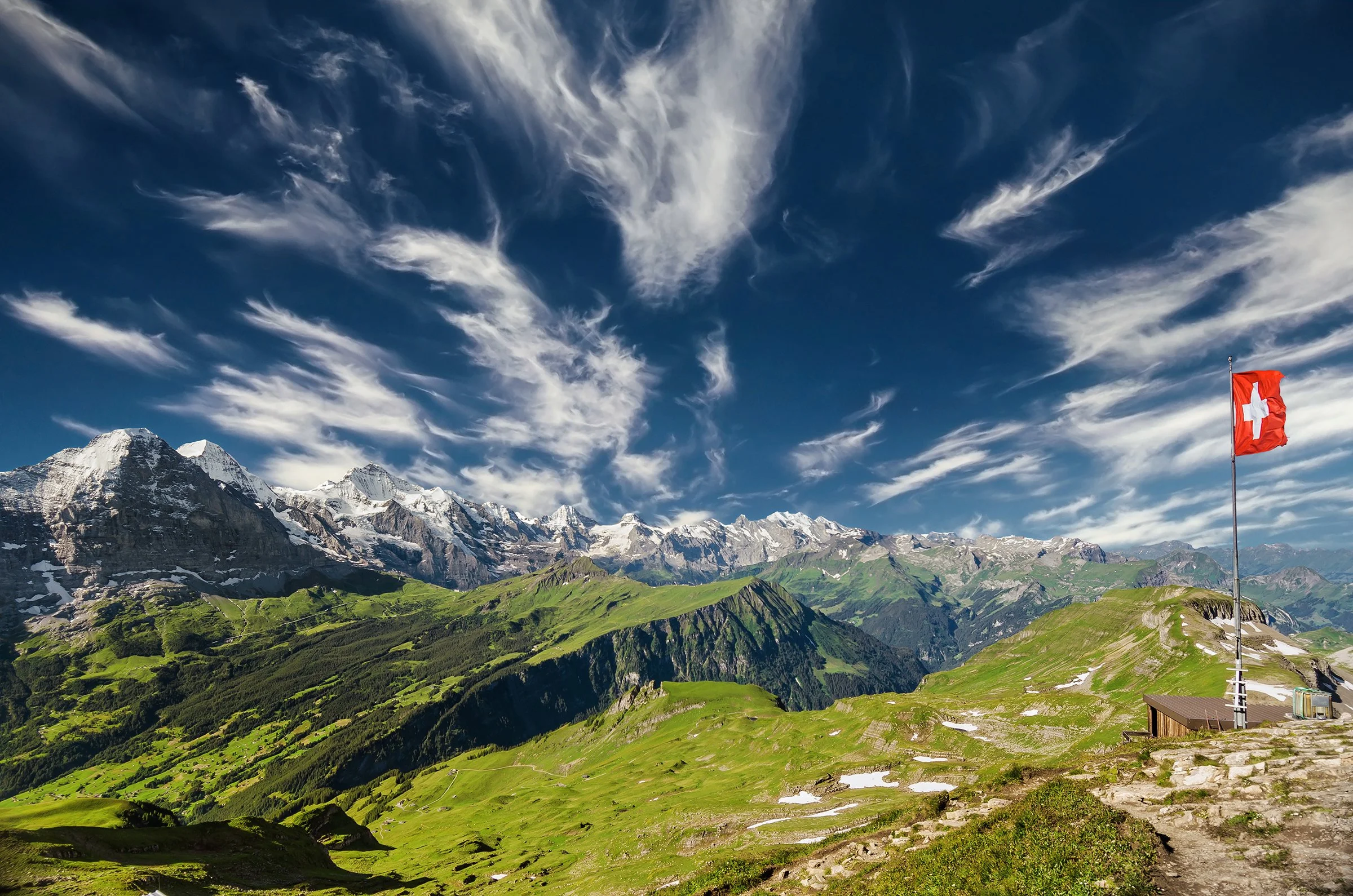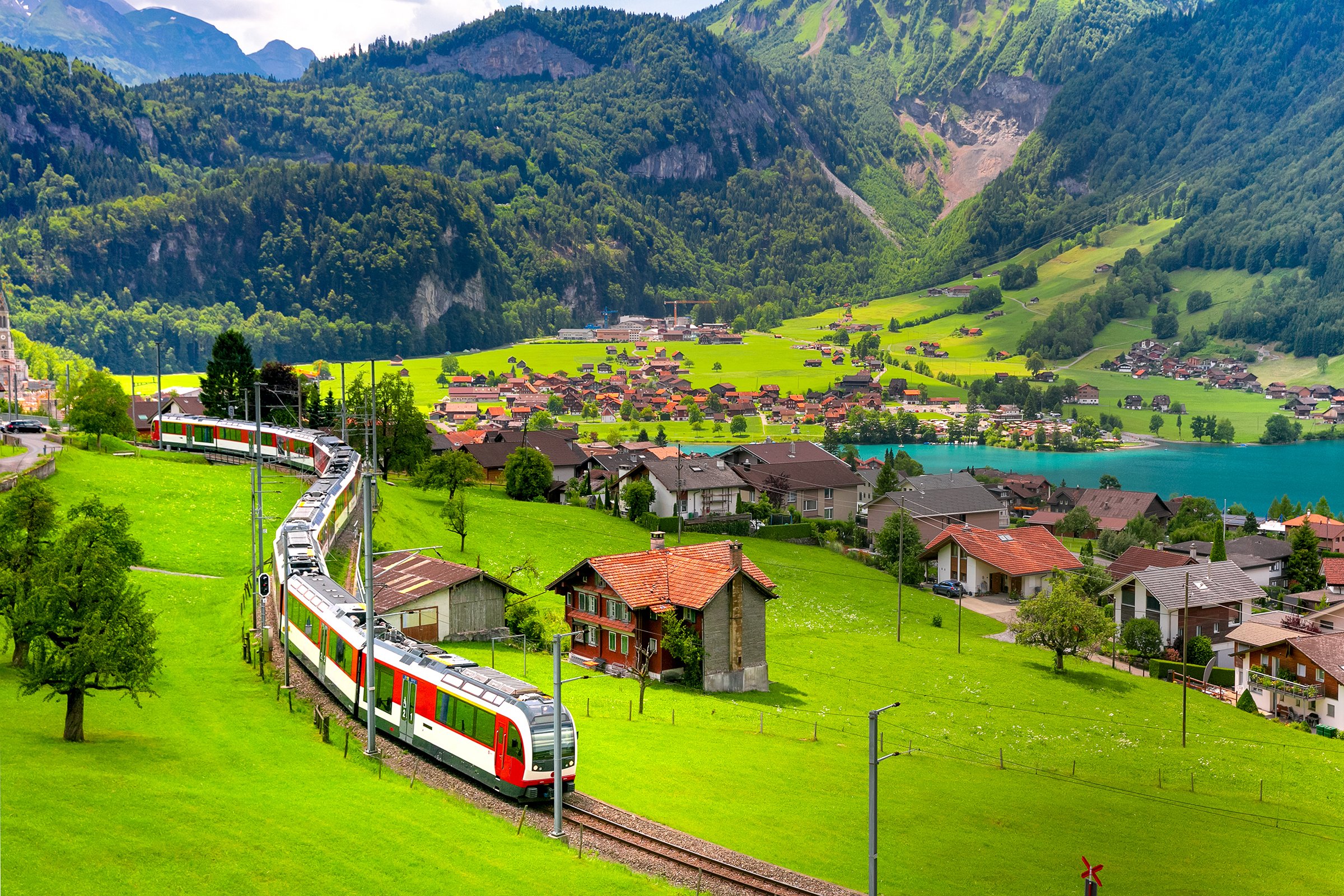View to the Eiger (left), Mönch and Jungfrau peaks from the Faulhorn (2,681 meters).
The Faulhorn (2,681 meters) is a mountain in Switzerland which offers one of the grandest vantage points in the Berner Oberland region of Switzerland. Even more, the summit is very accessible to hikers (no climbing experience necessary*), and there’s a historic hotel perched on the top. What more could you ask for?!
There are a number of ways to hike to the summit of the Faulhorn. Here are five popular options.
Hiking from Schynige Platte to the Faulhorn
This is the classic, and arguably the most scenic, way to reach the Faulhorn. Not only do you get HUGE views of the famous Eiger, Mönch and Jungfrau peaks to the south, but you ALSO get the wide panoramic spectacle of Lakes Thun, Brienz and their abuting peaks to the north. This hike takes approximately four hours one way not including breaks.
Hiking from First to the Faulhorn
This hike begins with a gigantic boost by gondola from the village of Grindelwald to a mountain cable car station called First. From First, the busy but oh-so-gorgeous trail carries you past the glimmering Bachalpsee, one of the most beautiful lakes in Switzerland. From the lake, an uphill climb delivers you to the Faulhorn. The walk takes approximately two and-a-half hours one way.
Grosse Scheidegg to the Faulhorn
As the name suggests, this hike begins at Grosse Scheidegg, passes by the Bachalpsee (see First-Faulhorn above) and continues to the Faulhorn. This hike stays high so it’s incredibly scenic on a clear day. It’s also a longer hike than the walk from First. Plan on walking approximately four hours one way not including breaks.
Hiking from Iseltwald to the Faulhorn
You don’t hear about this hike very often because it’s pretty much straight up. This hike also begins at the village of Iseltwald located on the south shore of Lake Brienz which is somewhat secluded and takes extra effort to get to. Iseltwald doesn’t experience the same amount of touristic traffic that Schynige Platte and Grindelwald do so the trail is generally quieter. If you’re looking for a strenuous, and somewhat sneaky, backdoor to the Faulhorn, this is it. Plan on hiking approximately five hours one way..up, up, up.
Bussalp to the Faulhorn
Hopping on a bus in Grindelwald will deliver you to a mid mountain meadow called Bussalp. Descend the bus, then hike uphill for three hours to reach the Faulhorn. Remember to look behind you as you climb. The views of the Eiger, Mönch and Jungfrau are sublime.
Of course there are some other creative ways to reach the Faulhorn. You can also skip the cable cars and buses if you’d like a full day of climbing. That said, no matter how you hike to the Faulhorn, the views across the Berner Oberland when you get there are splendid. As we mentioned previously, there’s a hotel/restaurant up there too, so bon appetite and sweet dreams!
Would you like to hike to the Faulhorn? An inn-to-inn hike through the Berner Oberland is a great way to do it! Check out our:
9 Night Berner Oberland Inn-to-Inn Hike
5 Night Berner Oberland Inn-to-Inn HIke
Or request info for our 7 Night Jungfrau Wanderweek.
*Note: While climbing experience is not necessary to reach the Faulhorn, hikers should have the knowledge, experience and fitness to travel above tree line in mountainous terrain. Please contact us if you have questions about hiking in the Swiss Alps.









